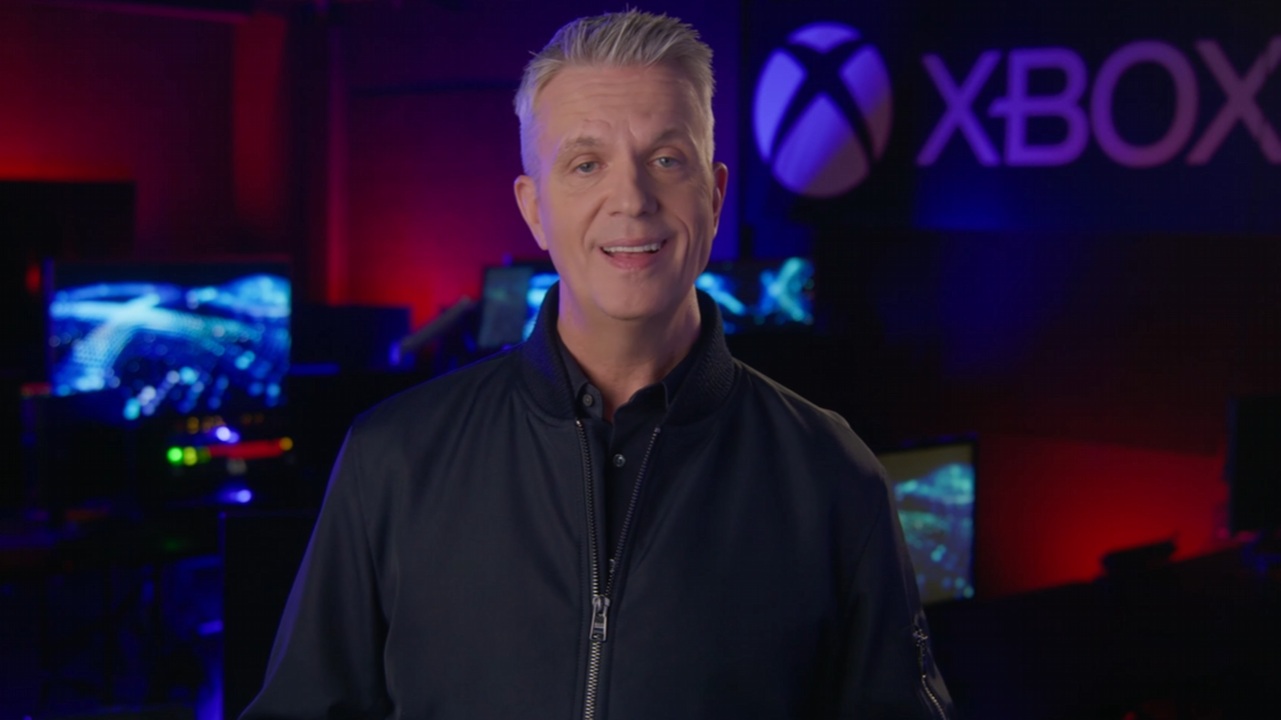The untold "app gap" story Part IV: Going from (A)pps to (B)ots
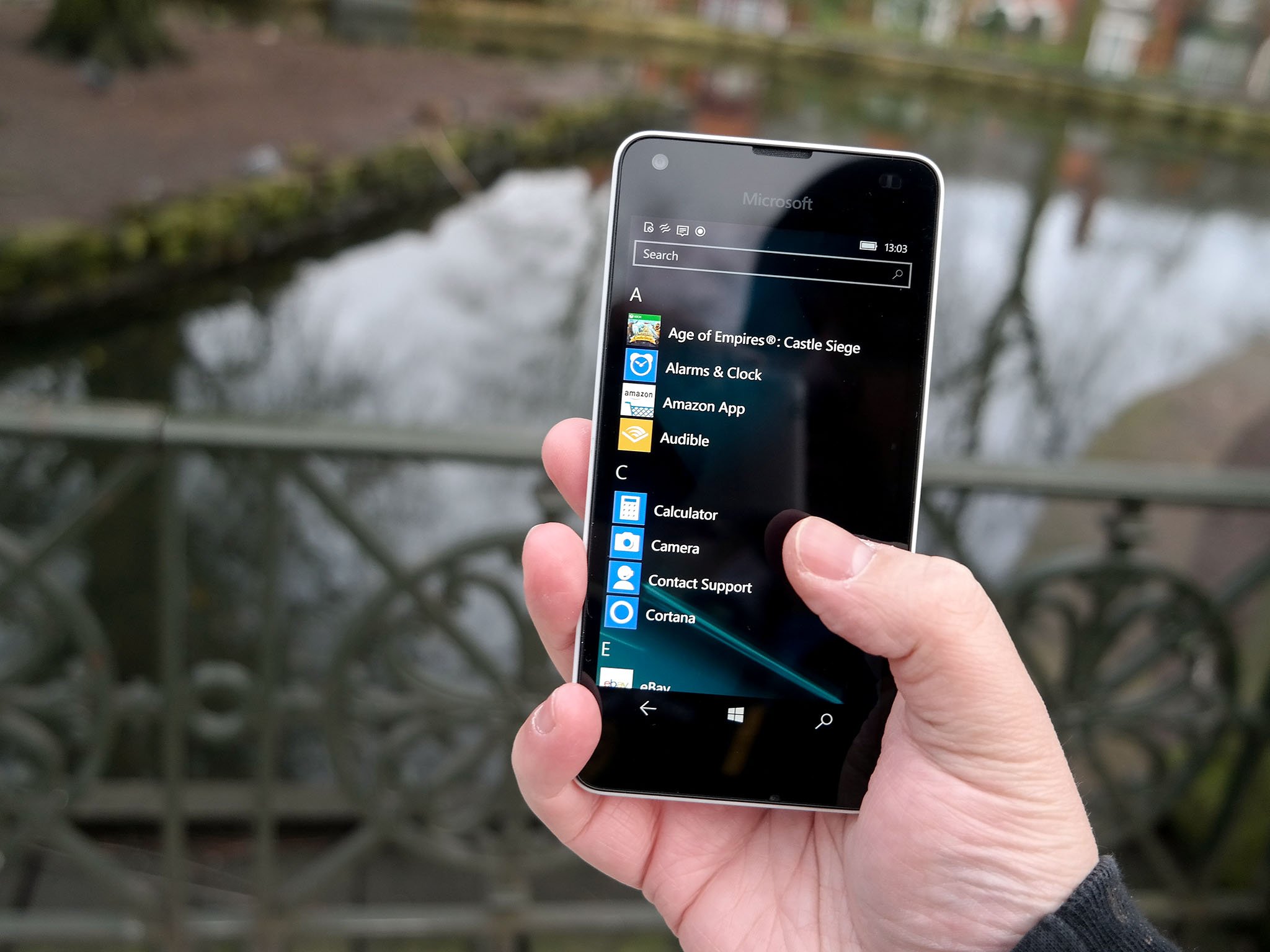
Our ongoing analysis of the data presented in the 2015 US Mobile App Report, as reviewed in this series, clearly reveals an "app gap" story that is rarely, if ever, told by most tech media. That is the story of human behavior.
Human behavior in relation to apps is a critical factor that must be considered when presenting the quantity and quality variables of the app gap equation. Through an analysis of the data beginning in part I and culminating here, we've clearly seen the unfolding of a tale that reveals that the app gap for the average smartphone user, based on human behavior, is far less impactful than many surmise.
We've also seen that we are moving from a user initiated app and app store dependent personal computing model, to a proactive artificial intelligence and bot supported paradigm. Yes folks, there is a shift underway and artificial intelligence and bots may become an almost seamless bridge between or physical and digital lives.
- Part I: Human behavior, the overlooked variable
- Part II: App gap? What app gap?
- Part III: The mobile web is the path to bots, apps 2.0
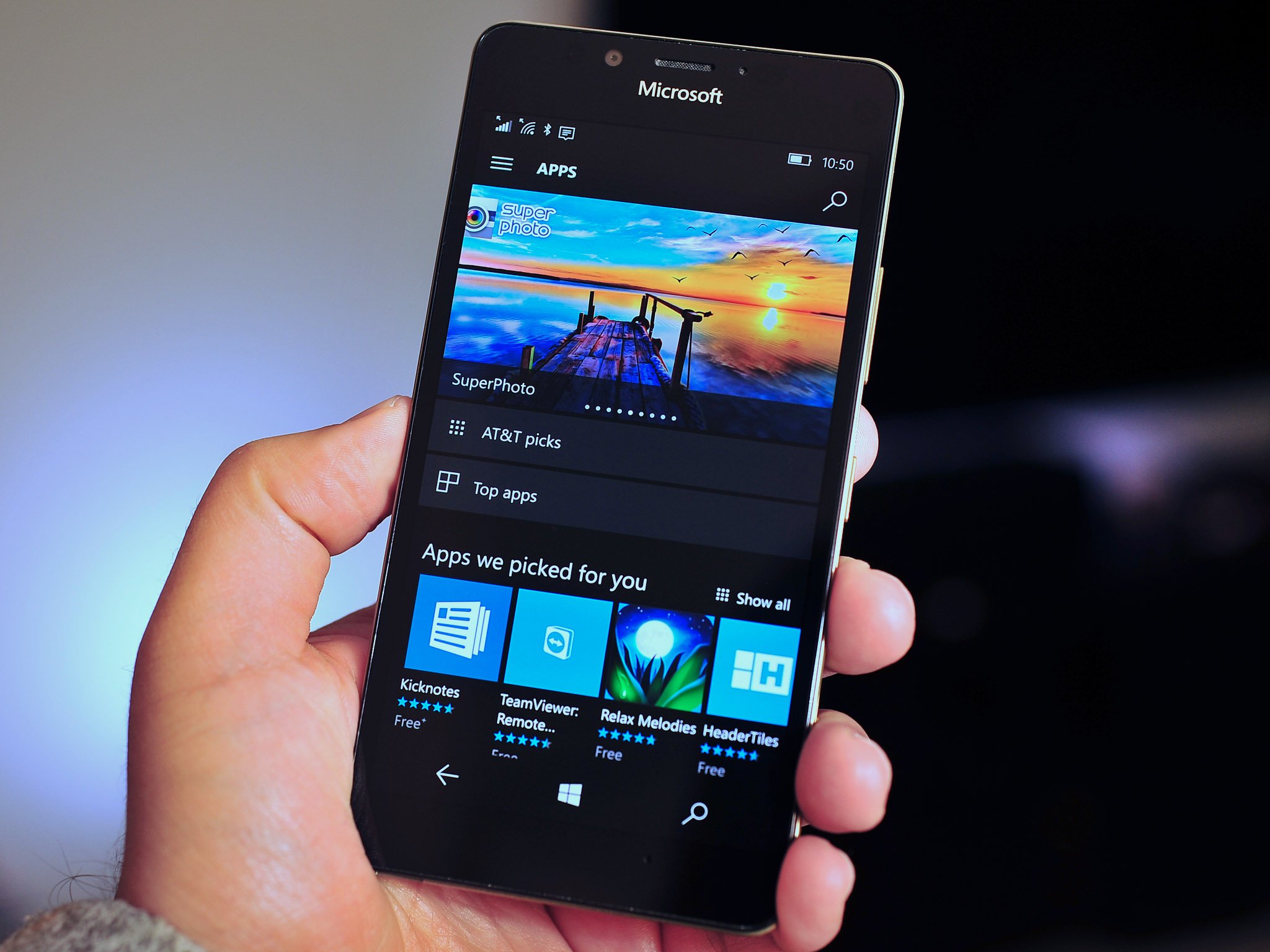
The story thus far
We began this series by sharing that the average smartphone user's mobile app behavior reflects a rather limited focus on a core set of apps despite a plethora of more than 1.5 million apps available on the dominant platforms, iOS and Android.
The data revealed that more than 90% of the average smartphone user's time is spent in their top six apps. It further revealed that the majority of the top 25 most engaged apps across, social, entertainment, and retail categories are available on Windows Mobile. Utility apps are also well represented on the platform.
Moreover, the average monthly downloads of apps per user (approximately one per month according to the 2014 Comscore Mobile app report) is exceedingly low despite app numbers exceeding 1.5 million on the leading platforms.
Additionally, app discovery efforts across all age groups and discovery methods are also minimal. The highest representation, which comes from the most engaged group (millennials), is a mere 27% of the smartphone using population using the app store for discovery. This number only decreases across other discovery methods and demographics.
All the latest news, reviews, and guides for Windows and Xbox diehards.
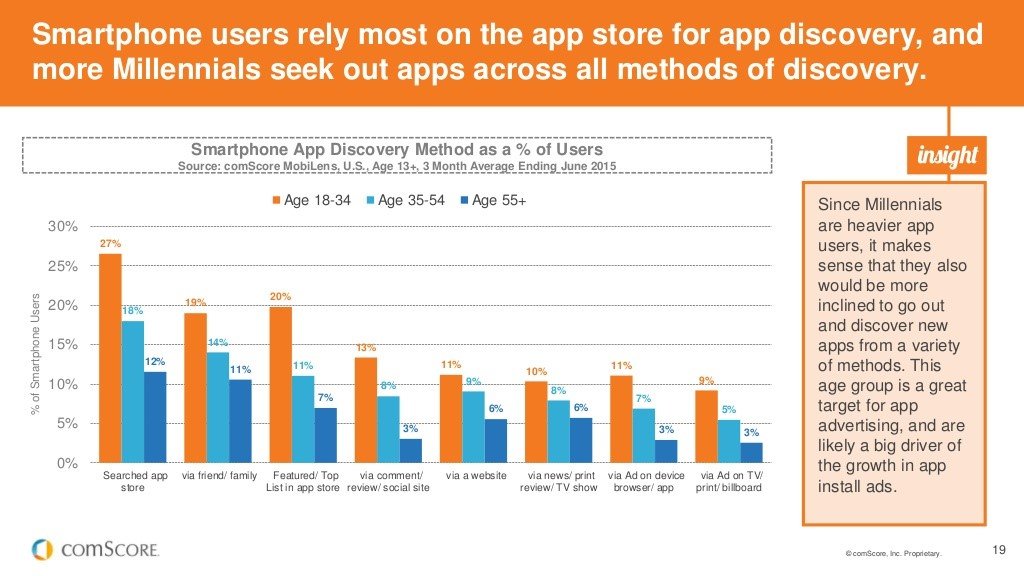
We've also seen how human behavior and the current app and app store model are an inefficient and ineffective pairing. The mobile web has proven to be a much more highly engaged platform than mobile apps.
A comparison of the Top 1000 Apps vs. the Top 1000 mobile web properties show a surprising result. Not only do mobile web properties have audiences more than 2.5X the size but these audiences are also growing twice as fast.
This data revealing our mobile web behavior helped to paint a clear picture of our mobile "web" and "app" relationships for certain scenarios. Many smartphone users are deferring to the mobile web when they venture beyond their top six apps to utilize some service or perform some "in the moment" function for which they have no installed app.
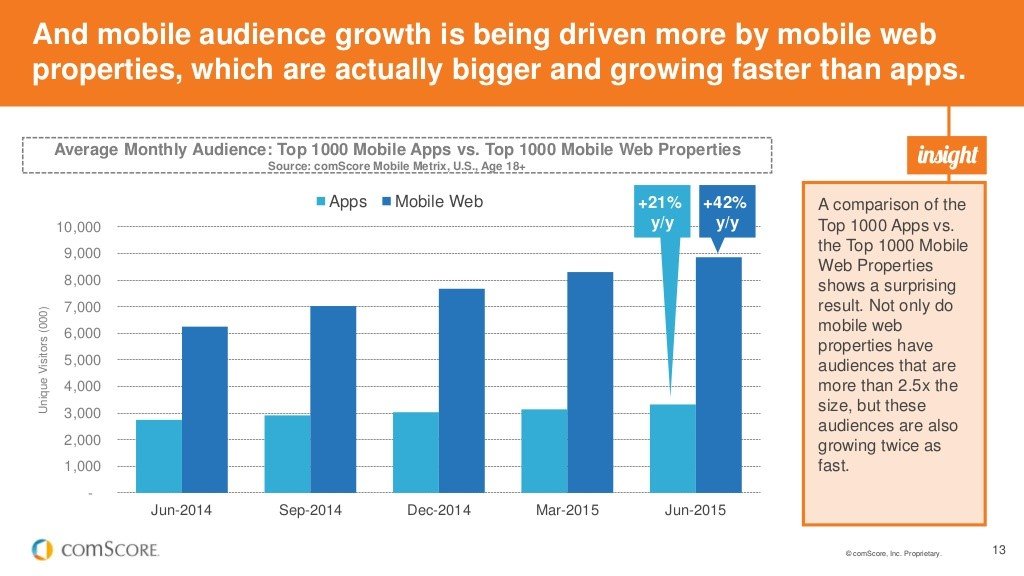
The "human-web-relationship", as we shared in Part III, is more ingrained within us than the newer "human-app-store-relationship." As such, rather than searching for, downloading, locating on a device and initiating an app that may or may not be used again, many users simply defer to a service's web site for those "in the moment" needs.
This model works synergistically with a mobile-first, cloud-first computing environment.
This behavior positions users to benefit from the context- and intent-aware artificial intelligence and bot-model tech giants like Facebook and Microsoft are working to usher in, as well as startups like Viv. This "app 2.0" personal computing paradigm, if successful, will work synergistically with a mobile-first, cloud-first personal computing environment where a users mobility of experiences are managed via a ubiquitous intelligent cloud.
This proactive AI and cloud combination will be able to initiate a bot and user interaction that will be far more efficient than the current user-initiated "warehouse of apps" model smartphone users and the industry currently rely upon.
Bots rising
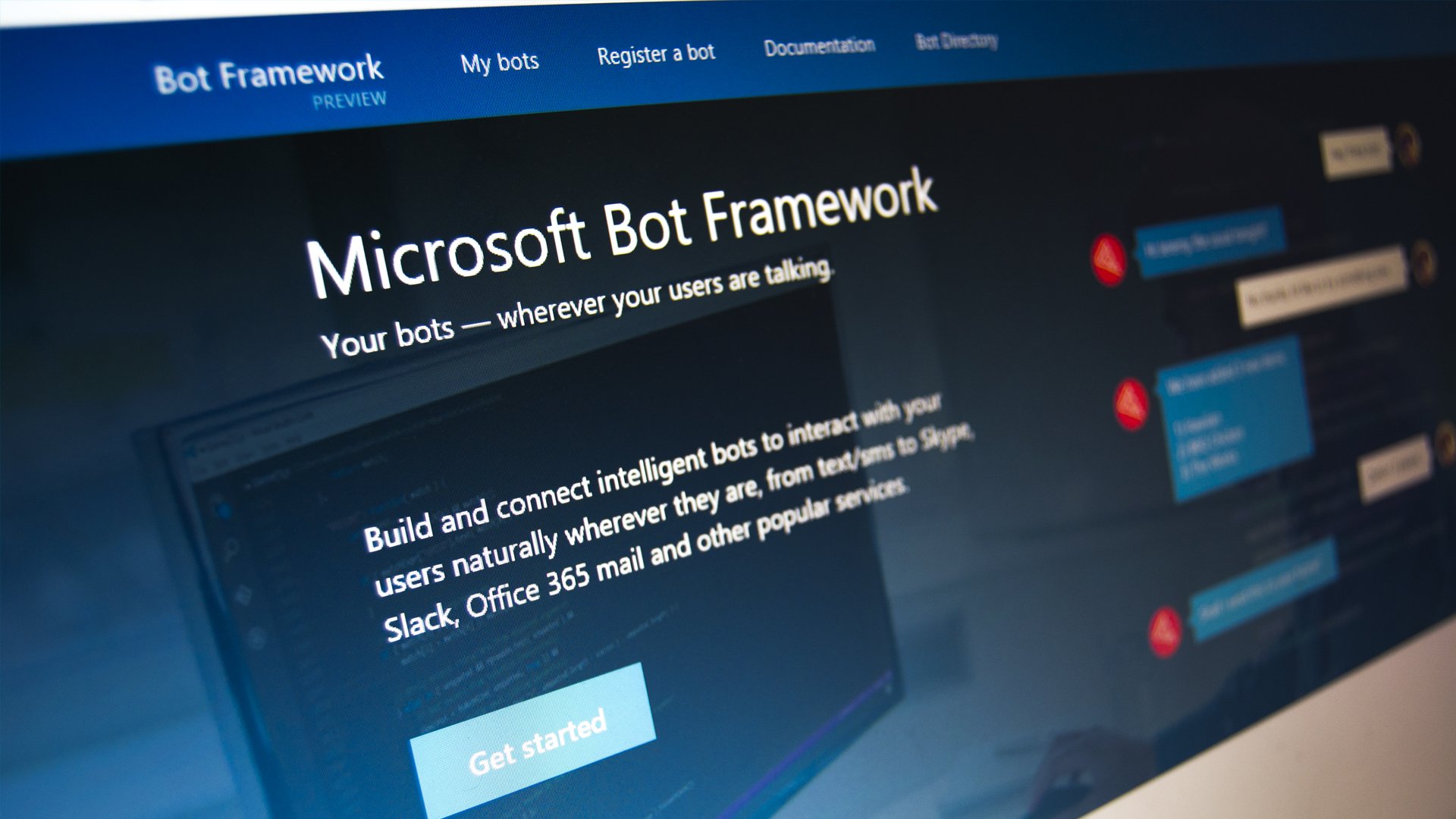
Microsoft has made deliberate moves to make itself a platform for app development. The extension of this initiative through the Bot Framework positions the firm to take advantage of what may come to be seen as the "post-app" model. Through artificial intelligence and machine learning the new user interface will indeed be the digital assistant which we will engage via voice as well as other methods such as ink, text and touch.
Microsoft's CEO Satya Nadella gave a sweeping overview during Build 2016 of the scope of Microsoft's Bot Framework and Conversation Canvases, which are the broad and deeply integrated tools and platforms to accommodate this ambitious goal. Nadella stressed Microsoft's position as a platform company when he said, "We want to make things so that others can make things. That is our broad platform approach."

This platform model positions Microsoft's strategy to have industry-wide implications due to it's breadth, depth and comprehensive cross-platform approach. Developers who embrace the new bots as apps model (where appropriate) and Microsoft's platform will begin to view the user's experiences across all of their devices rather than the one or two platforms commonly targeted under the current model. Nadella said it this way:
Mobile-first and cloud-first is not about the mobility of any single device it is about the mobility of the human experience across all of the devices and all of the computing in our lives.
Nadella also stressed the importance of the cloud which is the backbone and power of the evolving personal computing AI and bot powered landscape:
Cloud is not a single destination it is a new form of computing that in fact enables that mobility of those experiences across all our devices. It infuses those experiences with intelligence. Because it has the ability to reason over large amounts of data using a distributed computing fabric. That's the mobile-first, cloud-first world for which we're building.
It is clear that Redmond is pooling its resources in artificial intelligence, machine learning, deep neural networks, voice, natural language processing, search and more to herald in the "post-app" age of artificial intelligence and bots. The AI and bot strategy addresses the aspect of infrequently used apps. This system will recognize intent and engage bots without the need for a user to search a store for a certain app or store certain apps on the device. Cortana will, in effect, be the ubiquitous, cloud-residing "app for that."
Google's Instant Apps provide a more immediate solution to this same challenge. Though Mountain View, too, has a refreshed AI investment in Google Assistant.
It's been a long road
Microsoft has been on this journey for many years. An intelligent system that not only understands the user and their intent but is also capable of proactively providing the user's needs has been Redmond's goal since the ill-fated, "no-ubiquitous-internet-locally-constrained-before-its-time" Microsoft Bob. Still Steve Ballmer's statements in a July 11th, 2013 memo reveals that what Nadella presented at Build 2016 has long been in the works at Microsoft:
"Our machine learning infrastructure will understand people's needs and what is available in the world, and will provide information and assistance,"…"We will be great at anticipating needs in people's daily routines and providing insight and assistance when they need it. When it comes to life's most important tasks and events, we will pay extra attention. The research done, the data collected and analyzed, the meetings and discussions had, and the money spent are all amplified for people during life's big moments."
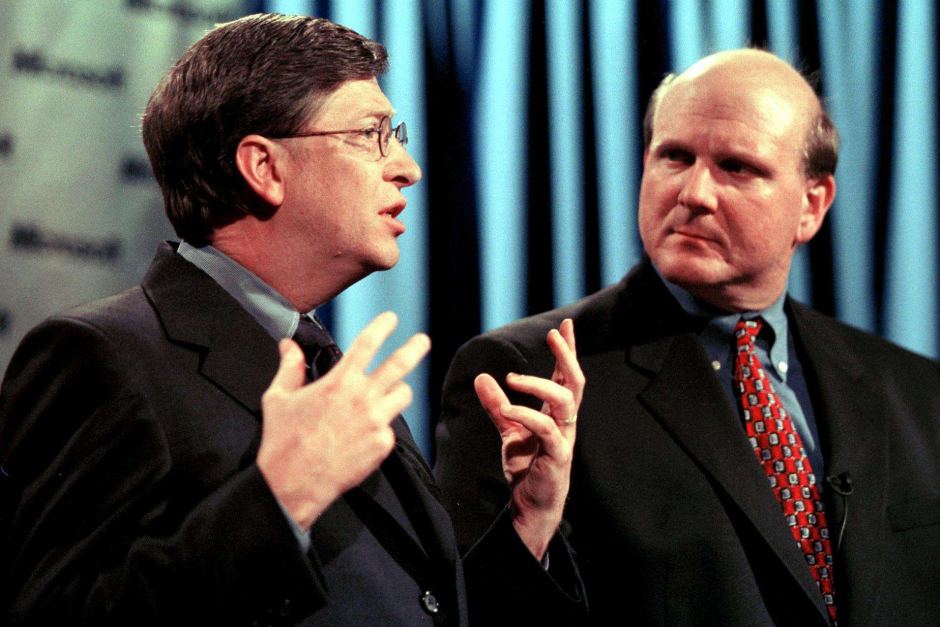
These statements are supported by Bill Gates's words from a 2013 Research Faculty Summit where he said:
As everyone gets essentially what we'd call the personal agent—it's been talked about for decades and now really is possible—we see where you're going, we see your calendar, we see your various communications, some of those communications we can actually look at the tags, look at the speech, try to be helpful to you in your activities,"..."I think that we will be more connected, so that when somebody wants to find a gift of a certain type, or take a trip in a certain way, that there will be a closer match."
Microsoft's goal is to integrate pervasive intelligence across its ecosystem. Additionally, with cross-platform development such as Cortana on iOS and Android and intelligence incorporated into other cross-platform apps such as Office and Skype, as well as the cloud Redmond aims to present a ubiquitous intelligent platform for developers to target.
What you need, when you need them
The "mobility" of this intelligence across devices and Conversation Canvases avails developers of a target for their apps that provide for both predictive and proactive engagement of those apps. In a nutshell, user-aware AI such as Cortana will proactively connect users to a developer's app based on user intent and context. Marcus Ash, Group Program Manager for Cortana on Windows, demonstrated such an interaction at Build 2016:
Naturally such a model where context- and intent-aware intelligence proactively connects with "bots as apps", and promotes app/bot-user-engagement based on context and intent is a much more compelling model into which developers can invest than the current app model where an app can be "lost" among the many.
Context- and intent-aware intelligence proactively promotes app/bot-user-engagement.
Without a doubt, Microsoft's decade's long investment in natural language understanding and machine learning will come into play within this new AI, and bot supported environment. As a leader in this technology with the support of a dedicated search engine backbone in Bing, Microsoft has an advantage over rivals like Facebook and Viv who are also pursuing AI and bot technologies. Google, however, is also a contender with its industry leading search engine and recently announced Google Assistant and intelligent messenger Allo.
The industry's transition from a user-driven app focused model to an AI supported intelligent bot model is a natural evolution of the mobile personal computing landscape. This model allows for intelligent agents such as Cortana to follow and learn a user across devices and services via the cloud which fits well within the paradigm of Microsoft's Universal Windows Platform, their family of evolving Windows 10 devices and the firms cross-platform development.
Microsoft's aggressive push to rule personal computing
Cortana is the app for that
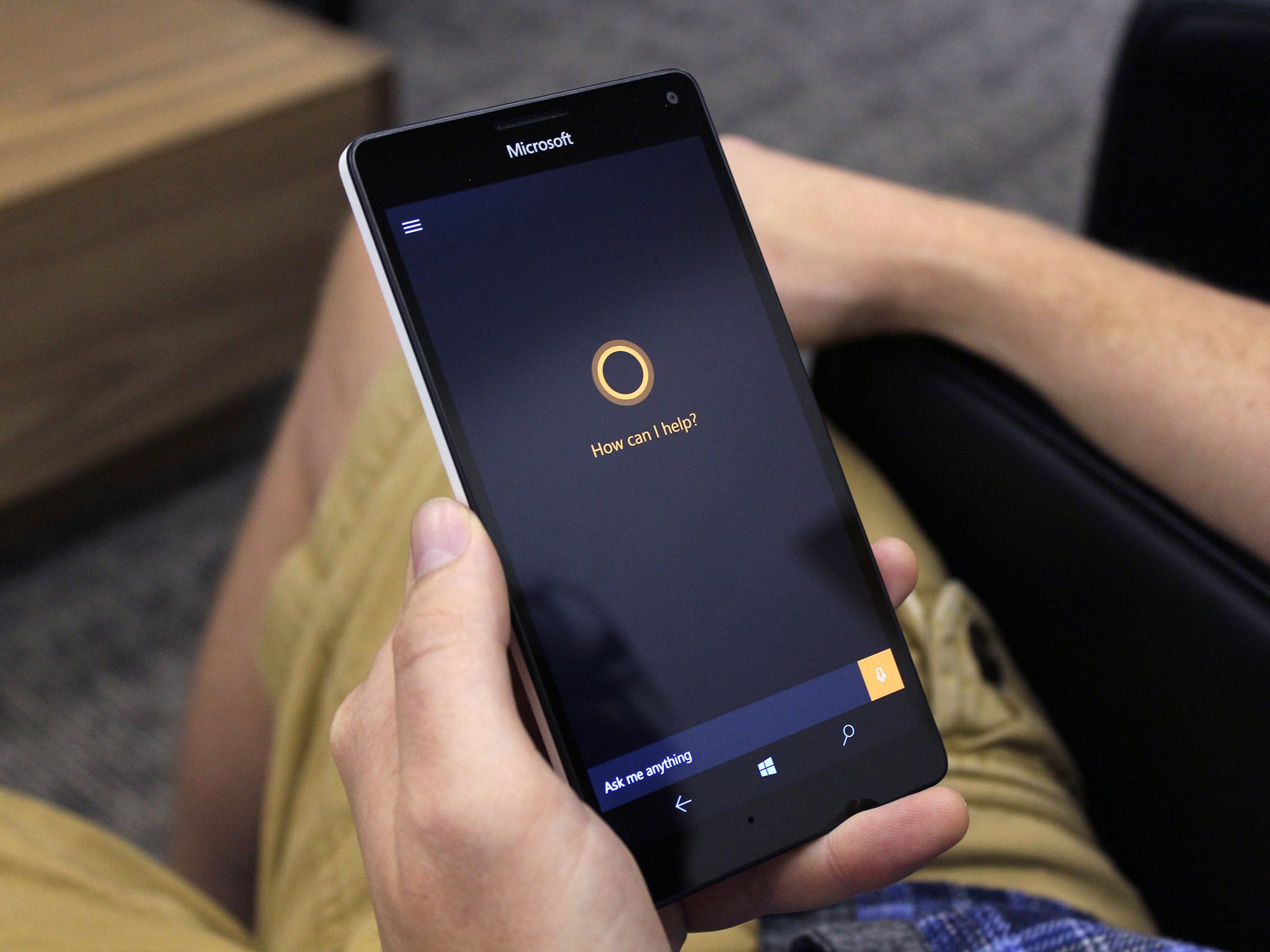
Even with some 91% of a user's smartphone time is spent within a selection of six apps, most venture out beyond those top six on a regular basis. Bots as apps (if Microsoft is successful with courting developers) will meet the need of those "not deeply engaged or infrequently used services" that often don't earn a place on a user's device as an app or that are seldom engaged once there.
Services that are currently facilitated in large numbers via websites or those activities beyond a user's top six apps can be relegated to artificial intelligence and bots. Banking apps, retail apps such as the Walmart, or habitual daily use apps like the Dunkin Donuts app and thousands of others fit in this category.
Cortana may be able to proactively engage a bot based on a users routine.
The Dunkin Donuts app, I understand, allows a user to place an order when they are within close proximity of Dunkin Donuts. Imagine a scenario where a user on his or her way home from work says, "Hey, Cortana order me a large black coffee when I get in town." Cortana who knows your route and the Dunkin Donuts you pass everyday, engages the Dunkin Donuts bot (based upon geofence data that alerts her that she is now in appropriate range for the DD app) to place the order. That's pretty slick.
Imagine applying Cortana's current proactive suggestion model to this scenario. Cortana can learn a users routine and proactively engage the user when she detects that he has left work.
Cortana:" Would you like me to order your usual when we get in town?"
User: "Sure"
Cortana: "Ok, got it." (As she seamlessly engages the Dunkin Donuts bot in the background)
This sounds like science-fiction, I know, but so did talking to a digital assistant in a powerful pocket-sized touch screen computer fifteen years ago.
Bots will fill the gap beyond top six apps
As the data has shown the current, "warehouse of apps" app model does not work efficiently with human behavior. The 2014 Comscore Mobile App Report shows that 7% of the smartphone using population downloads 50% of the apps. When incorporated into the rest of the population that averages to just one download per user per month.
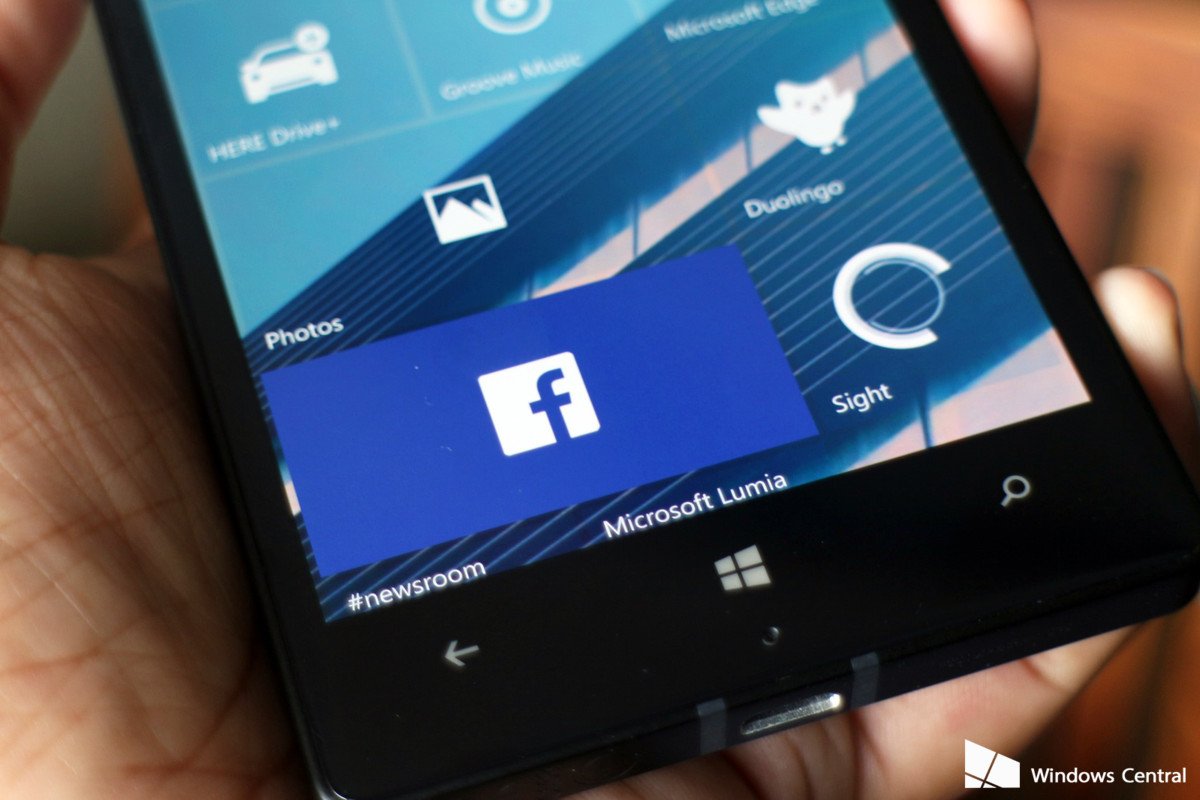
This data is supported by app discovery activity data that reveals a mere 27% of the smartphone using population (millennials) uses the app store to discover apps as shown in the 2015 Comscore Mobile App Report. This number decreases significantly across other discovery methods (friends, ads, etc) and demographics.
When we look at this data in conjunction with the data of high mobile web engagement, which is 2.5 times greater than mobile app engagement, human behavior in relation to how we engage services beyond our core apps emerge.
Millions of smartphone users are deferring to websites to accomplish many functions rather than committing time and energy toward searching an app store to find and download an app to render the service.
Bots will eliminate user's reliance on the inefficient "warehouse of apps" model.
Given the stats of high engagement of web properties via smartphones, proactive web-connected intelligence that understands context and intent will promote a businesses or developers services to a user, surfacing them and making user's more aware of an internet of useful content. AI such as Cortana or the coming Bing Concierge Bot will broker the interaction between that user and the services bot eliminating a user's dependence and industry's reliance on the inefficient "warehouse of apps" app store model. AI intelligence, such as Cortana will in effect become the "app for that." Developers will find this model more rewarding as it uses multiple sources such as the internet, user behavior, context and more to promote app engagement in a way that the current user-driven model cannot.
Apps 2.0, bots, a more engaging model
This strategy may win developers in that it presents an app model that, at least on paper, will elicit higher levels of "app" (as bots) engagement than the current app model.
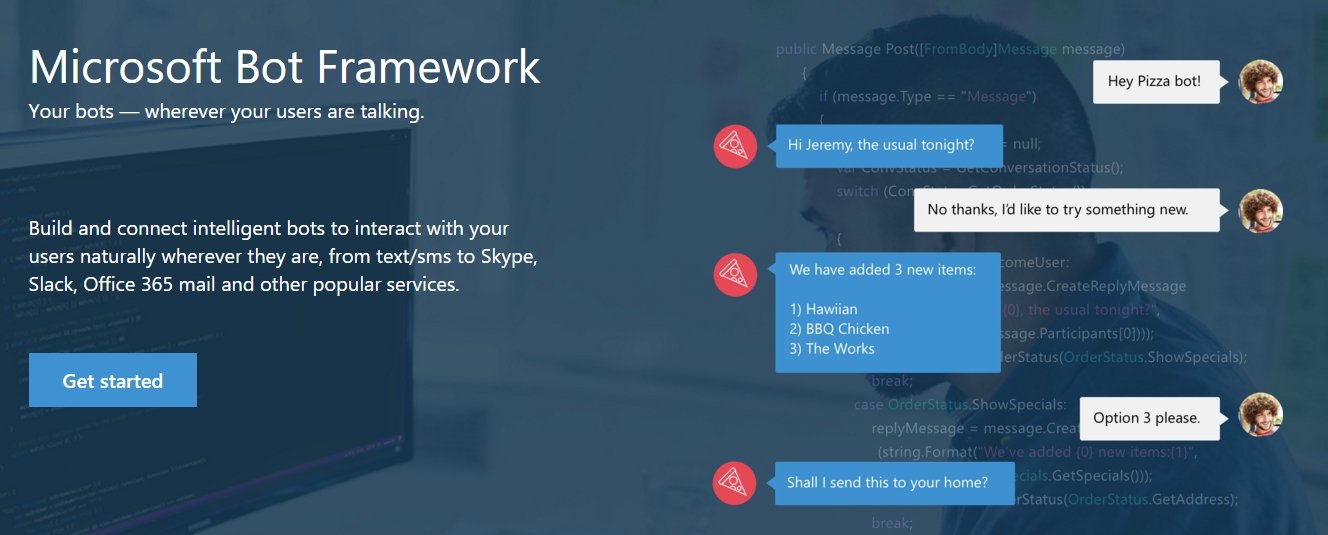
With Microsoft's platform for Universal Windows development, a developer who embraces this bot vision can also target the range of Windows 10 devices with UWP apps. These downloadable apps may be desired by some users who engage the "bot version," thus increasing a developer's depth and reach with users.
Microsoft's cross-platform development tools in conjunction with the Bot Framework, and Conversation Canvases like Skype creates a platform where a developer can target every OS from within Microsoft's centralized environment.
Microsoft's comprehensive development platform can make its ecosystem more attractive to developers.
Thus, Microsoft's comprehensive approach to development makes not only it's tools more attractive, but can also create a comfortable developing environment that ultimately makes Microsoft's ecosystem more attractive. Developers using Microsoft's tools may begin to view all platforms, including Windows as a single "mobile" target as they use Microsoft's "single" platform for development.
App gap? Microsoft has a platform for that
If Microsoft's retrenchment strategy is successful, the app Bridges and the company's strategic positioning of Windows as a comprehensive platform for app development will garner support for the present app model and thereby build a foundation of developers for the future of "bots as apps" model.
This is just the beginning
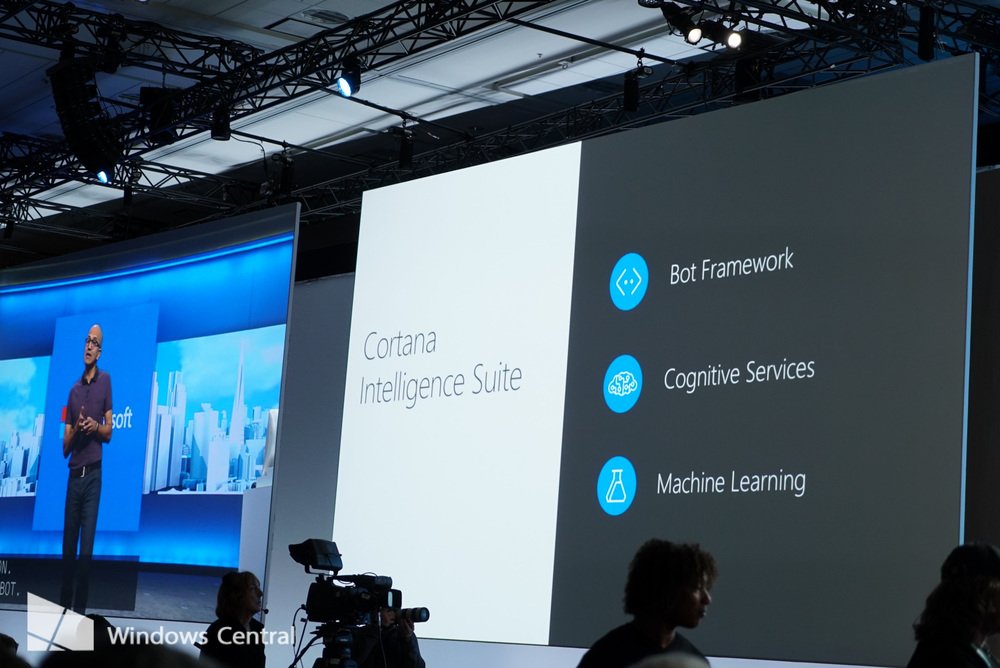
So is there an app gap? In relation to the "face value" definition of a quantity and sometimes quality disparity between the leading apps stores and the Windows Store, yes, there is. In relation to the often inferred and accepted definition that the app gap means a greatly inferior experience if a consumer chooses Windows Mobile and therefore should avoid the platform; based upon human behavior in relation to apps and what apps are statistically used most by the average user, the app gap becomes surprisingly far less apparent.
Microsoft is facing all aspects of the app gap problem, wisely, from a forward-looking perspective. Though the app Bridges and other developer-courting attempts reach toward a more immediate solution, Redmond's far-reaching Bot Framework and Conversation Canvases strategy is indeed future focused. Nadella conceded as much when he shared that Microsoft is only at the beginning of this journey during his Build 2016 keynote. But before you dismiss this with eyes focused solely on the present, consider how far we've come and how fast we got here since the iPhone changed the game in 2007.
The future will be here before we know it. And when we are interacting with artificial intelligence such as Cortana as naturally as we do one another, and bots facilitating our digital activities are as commonplace as our current "touch to launch an app" is today, we may be asking with all sincerity, "App gap, what app gap?"

Jason L Ward is a Former Columnist at Windows Central. He provided a unique big picture analysis of the complex world of Microsoft. Jason takes the small clues and gives you an insightful big picture perspective through storytelling that you won't find *anywhere* else. Seriously, this dude thinks outside the box. Follow him on Twitter at @JLTechWord. He's doing the "write" thing!

